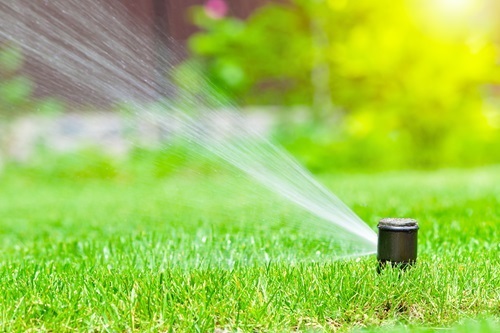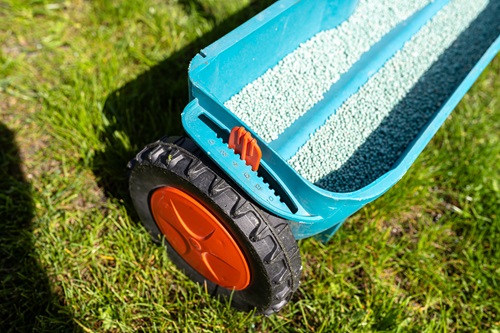
Maintaining a green, healthy lawn during the summer can be quite a challenge. Many homeowners tend to overwater in an attempt to keep their grass hydrated, which can lead to problems like disease or drought stress. Proper watering practices are essential to ensure your lawn stays vibrant and robust throughout the hottest months. So, here are some lawn care tips on how to achieve that perfect balance.
Summer Lawn Care Tips
Assessing Your Lawn’s Water Needs
Every lawn has specific watering requirements, typically needing about 1 inch of water per week, including rainfall. To accurately measure this, place small containers, such as tuna cans, around your lawn and run your sprinkler system. Once these containers collect about an inch of water, you’ll know you’ve provided the right amount. It’s important to remember that different areas of your lawn might require slight adjustments for even coverage.
Best Time to Water Your Lawn
Watering your lawn early in the morning is ideal when it comes to lawn maintenance in Conway SC. This timing allows the grass to absorb water before the heat of the day, reducing evaporation and helping prevent diseases by minimizing the time grass blades remain wet. Morning watering sessions promote deep root growth, making your lawn more drought-resistant and healthier overall.
Determining Watering Frequency
Generally, watering your lawn once or twice a week should be sufficient. However, this frequency depends on several factors, including your soil type and the efficiency of your irrigation system. Conducting an irrigation audit will help you determine how much water your system delivers, allowing you to adjust the frequency and duration of your watering sessions accordingly.
Adjusting Watering Duration
The duration of your watering sessions can significantly impact your lawn’s health. Typically, watering for 25-30 minutes is effective, but this can vary based on the following factors:
Soil Type: Sandy soils drain quickly and may require longer watering periods, while clay or loamy soils retain water longer and might need shorter sessions to prevent waterlogging.
Irrigation System Efficiency: The output of your sprinkler system will determine how long you need to water to achieve the desired depth. An irrigation audit can help you understand your system’s efficiency.
 Signs Your Lawn Needs More Water
Signs Your Lawn Needs More Water
Recognizing when your lawn needs more water is crucial for maintaining its health. Symptoms of drought stress include thinning, yellowing, or browning grass, and slower growth. Some drought-tolerant grasses might go dormant to conserve water, but others can suffer significant damage if underwatered.
It’s essential to differentiate between drought stress and disease, as both can cause similar symptoms. Disease often presents as irregular, circular patches with dead centers and lighter edges. Checking soil moisture can help you identify if the problem is due to drought (dry soil) or overwatering (damp soil).
Cooling Your Lawn Naturally
As summer temperatures rise, it’s tempting to increase watering frequency. However, overwatering can promote disease, especially in shaded areas. Instead, consider using natural methods to keep your lawn cool. Adding a light layer of top dressing, such as compost, can provide shade and reduce soil temperature. Be cautious, though, as too much top dressing can smother the grass. Moderation is key to preventing overheating and ensuring your lawn receives adequate sunlight and air.
Special Lawn Care for New Sod
Watering newly installed sod requires a different approach compared to established lawns. Here’s a suggested schedule to ensure proper hydration and root development:
- 1-9 Days: Water twice daily, in the morning and evening.
- 10-12 Days: Water once daily.
- 13-15 Days : Water every other day.
- 16 Days and onwards: Transition to providing 1 inch of water per week, similar to an established lawn.
Be vigilant for signs of disease, especially in shady areas where fungus can spread. Overwatering can exacerbate disease issues, so monitor new sod carefully and adjust watering as needed.
Avoiding Common Watering Mistakes
Proper lawn care in Conway SC extends beyond just the right amount of water. Here are some common mistakes to avoid:
- Overwatering: Can lead to shallow root systems and increased disease risk.
- Watering in the Evening: Prolongs wet conditions, encouraging fungal growth.
- Ignoring Soil Type: Different soils have different water retention capabilities.
By avoiding these mistakes, you can ensure your lawn remains healthy and resilient throughout the summer.
Achieving a healthy, vibrant lawn during the summer requires a strategic approach to watering. By understanding your lawn’s water needs, choosing the right time to water, and adjusting the frequency and duration of watering sessions, you can maintain a lush, green lawn all summer long. Monitor your lawn for signs of stress or disease, and make adjustments as needed to keep it in top condition. Work with experts like Conner’s Lawn Care Service.
Ready to enjoy a beautiful lawn this summer? Start implementing these tips today and watch your lawn thrive through the hottest months! Call Conner’s Lawn Care Service now.
Conner’s Lawn Care Service
Myrtle Beach, SC
843-504-4901
http://connerslawncare.com/


No comments:
Post a Comment